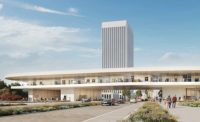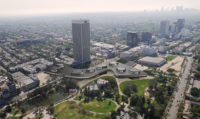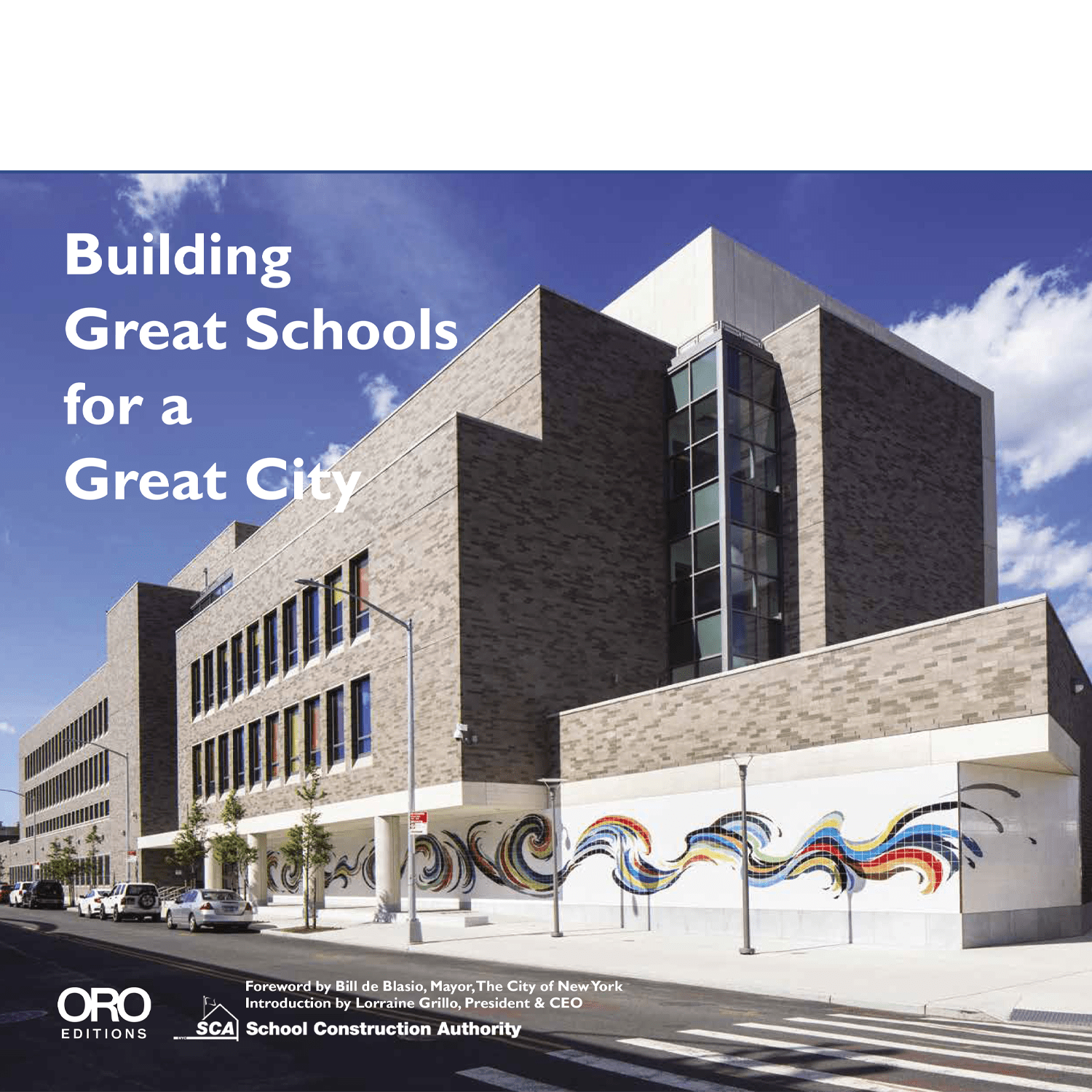The Los Angeles County Museum of Art (LACMA) has long been due for a major overhaul, according to its director Michael Govan and the Pritzker Prize-winning architect Peter Zumthor, who has been commissioned to re-think the museum’s east campus. “If you were to restore it, it would not really work because I think it never really worked well as a museum,” said Zumthor at a packed public conversation with Govan at the museum on Monday night.
Govan and Zumthor discussed the architect’s body of work and his plans for the museum in advance of the much-awaited June 9 opening of The Presence of the Past: Peter Zumthor Reconsiders LACMA. The exhibition showcases the architect’s $650-million proposal to redesign the LACMA campus and features a six-ton concrete model of his concept.
Despite the public’s sentimentality for the original 1965, three-pavilion campus designed by William L. Pereira, there was no way the museum could realize his original “floating museum” concept, said Govan. He pointed out that Pereira’s vision was already compromised within a few years of the museum’s completion. The biomorphic pool punctuated with fountains on which the museum seemed to float leaked with black tar from the neighboring La Brea tar pits. The pool was eventually filled in. A later, less-loved 1986 addition by Hardy Holzman Pfeiffer Associates further confused the museum’s circulation.
Rather than working with the flawed plan, Zumthor’s design would raze the 1965 and 1986 buildings and replace them with a single, raised, amoeba-like concrete structure with floor-to-ceiling glass. This feature would provide views of the city from the perimeter walkway and connect the museum to the city. “[The windows] could be lit at night like storefronts,” said Govan. “Even when the museum is closed you could look in and see exhibitions.” The addition will allow the museum to bring a large portion of its collection out of storage.
It was the building’s efficiency features that gained unhesitating applause from the audience on Monday. “This building would be the largest solar farm in any urban environment,” said Govan. Outfitted with solar panels, an integrated water pipe system that controls the temperature of floor slabs and walls, and a geothermal heat exchange system, the structure would give more energy back to the city than it uses. “It is unheard of in art museums,” said Govan, “Art museums are notorious energy hogs.”
The museum’s ambitious plans, however, are far from a sure thing. The design still has to be approved by the museum’s board and the Los Angeles County Board of Supervisors. Funds also need to be raised. “We are showing this in mid-stream. There are years to think forward. None of the galleries, systems, and other details are finalized,” said Govan, “but the idea was to put this out there—not just to trustees, donors, and staff, but to all the public—because it’s a civic building. LACMA belongs to everyone.”

















